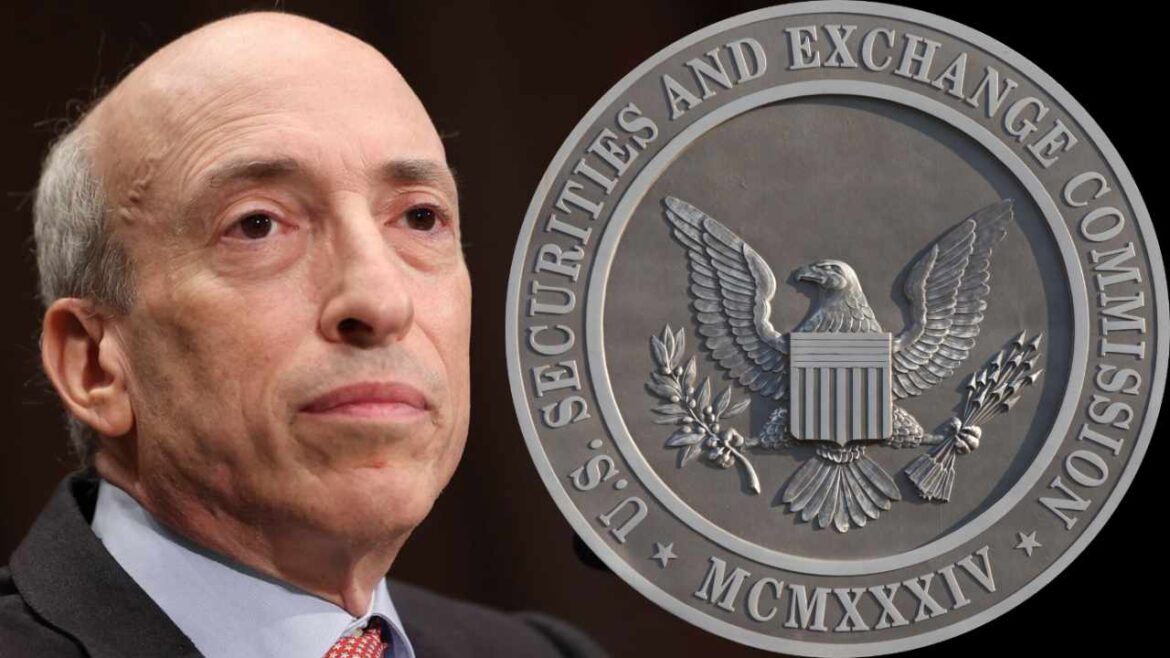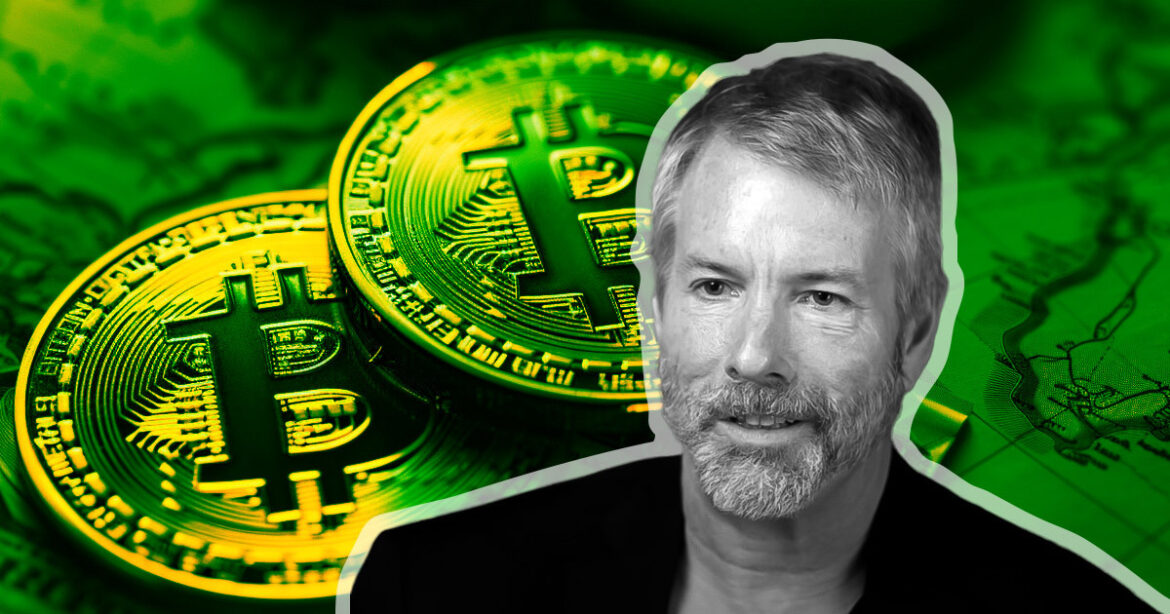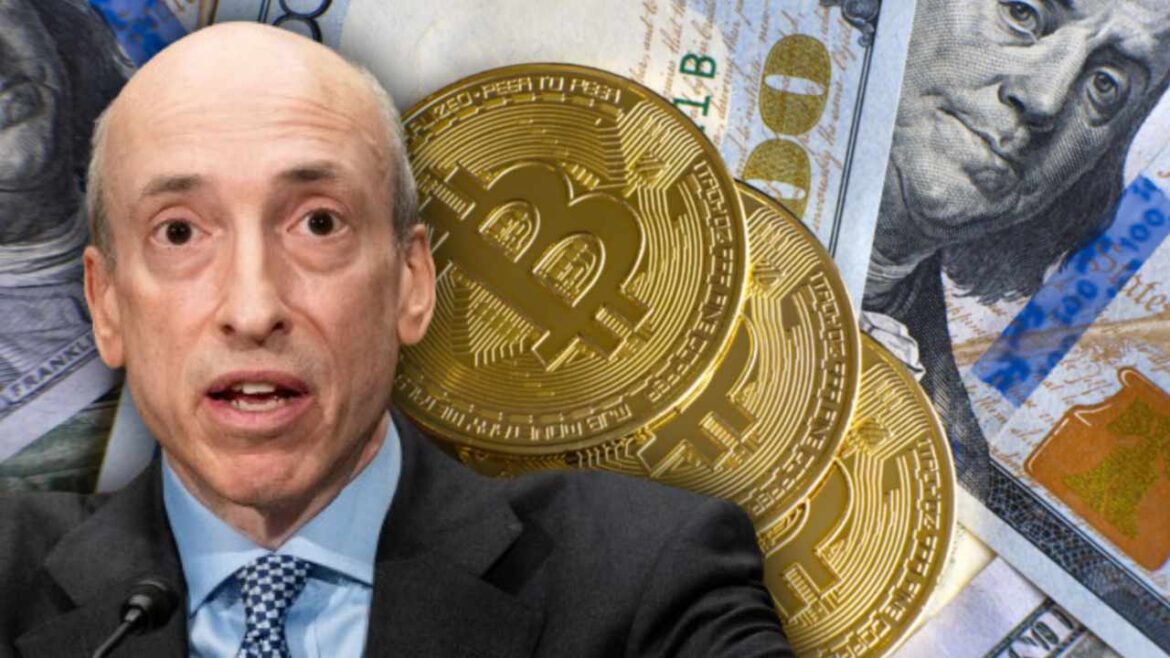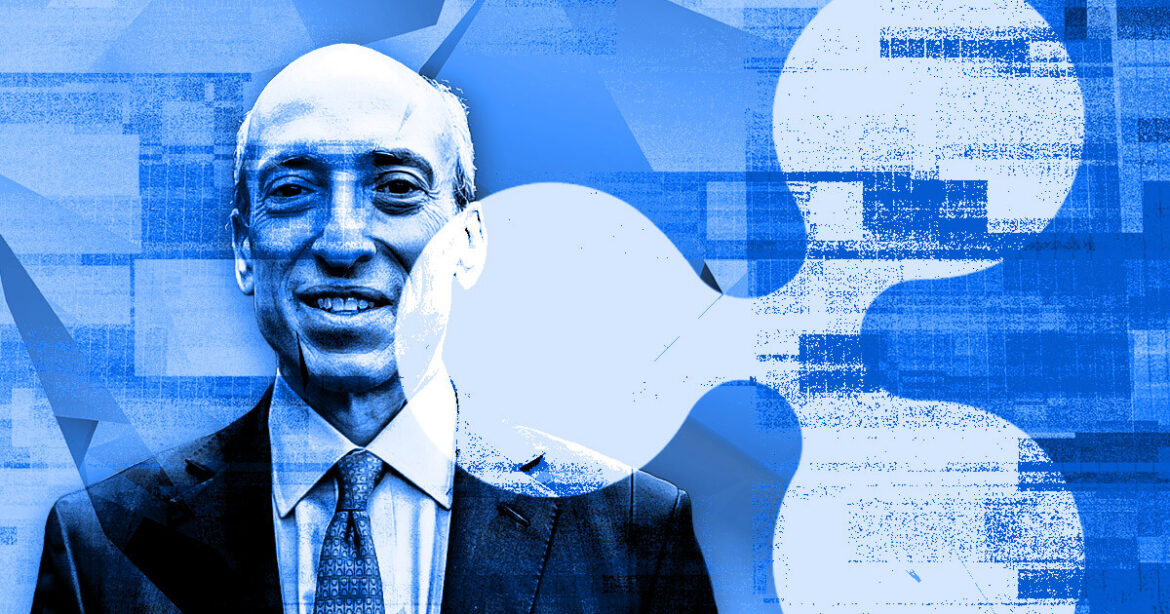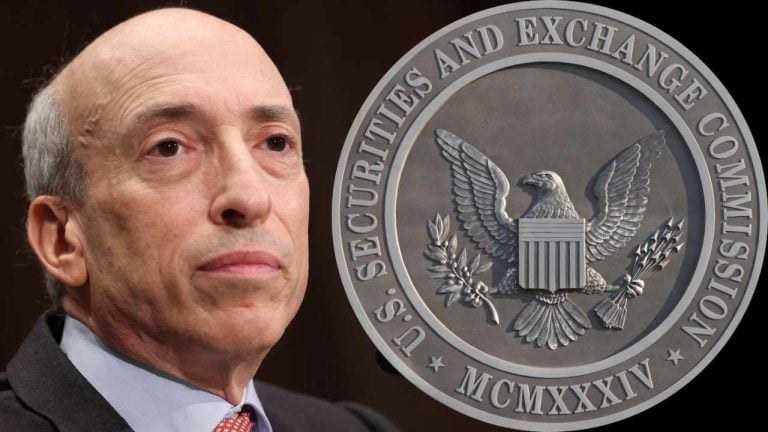 Veteran trader Peter Brandt has warned that U.S. Securities and Exchange Commission (SEC) Chairman Gary Gensler should not be trusted. He stressed that Gensler “has a long history of not looking out for the interests of investors.” Brandt further emphasized that the SEC chairman “was instrumental in the bankruptcy” of a major company and was […]
Veteran trader Peter Brandt has warned that U.S. Securities and Exchange Commission (SEC) Chairman Gary Gensler should not be trusted. He stressed that Gensler “has a long history of not looking out for the interests of investors.” Brandt further emphasized that the SEC chairman “was instrumental in the bankruptcy” of a major company and was […]
Source link
chair
MicroStrategy chair Saylor says Bitcoin represents the “digital transformation of capital”

In a recent interview with Fox Business, MicroStrategy Executive Chairman Michael Saylor delved into the transformative potential of Bitcoin, positioning it as a pivotal force in the shift from analog to digital capital.
Saylor’s insights come at a critical time when the flagship crypto is experiencing renewed interest and growth, highlighting its role in the evolving landscape of global finance.
According to Saylor:
“The conversion of analog capital to digital capital is not just a financial evolution; it’s a necessity for wealth preservation in the 21st century.”
With an estimated $900 trillion tied up in traditional assets like real estate, stocks, and bonds, he believes that Bitcoin offers unprecedented opportunities for capital preservation and appreciation.
“Economic energy”
Saylor began by addressing the fundamental question of what money truly represents, concluding that it acts as “economic energy” or the capital that underpins the wealth of the world.
Drawing on historical analogies, Saylor likened the digital transformation brought about by Bitcoin to the industrial revolutions of the past, where figures such as Rockefeller played pivotal roles in redefining energy consumption through oil.
He argued that just as earlier epochs saw the rise of civilizations through the management and channeling of physical forms of energy, the digital era could witness similar advancements through Bitcoin and its underlying network.
Saylor said:
“Civilizations have always advanced by mastering new forms of energy. In the digital age, Bitcoin is that new form of energy — a digital property powered by the most powerful computing network in the world.”
Saylor’s commentary extended to the broader implications of Bitcoin’s rise, suggesting it represents a new paradigm for protecting and enhancing wealth against traditional economic vulnerabilities like inflation, physical asset depreciation, and market volatility.
He said that Bitcoin is a secure digital space for capital, insulated from the geopolitical and environmental challenges that impact analog wealth. According to Saylor:
“Bitcoin offers a solution to the decay and depreciation of traditional forms of wealth. By moving wealth into cyberspace, we’re protecting it from the physical and economic challenges that have plagued assets for centuries.”
Shift in strategy
Saylor also discussed MicroStrategy’s strategic pivot towards becoming a Bitcoin development company. The company’s Bitcoin hoard now amounts to a little under 200,000 BTC, making it one of the largest whales in the industry.
With nearly $10 billion invested in Bitcoin, the company aims to leverage its assets and market presence to bolster the Bitcoin network. This involves issuing securities to acquire more Bitcoin for its shareholders. Saylor said:
“Our strategy is not just about holding Bitcoin. It’s about leveraging our assets to promote and expand the Bitcoin network”
Saylor said that the company’s long-term goal is to buy as much Bitcoin as possible and then “lock it up forever” while it focuses on developing the ecosystem around the flagship digital asset.
SEC Chair Gary Gensler Outlines ‘Very Real Economic Difference’ Between Bitcoin and US Dollar
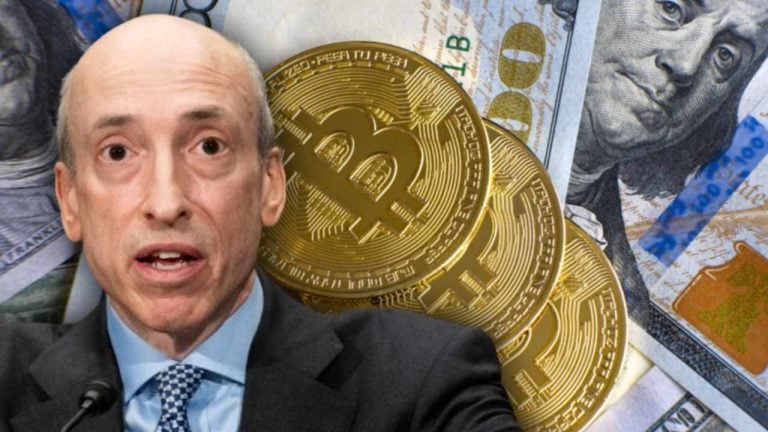 U.S. Securities and Exchange Commission (SEC) Chairman Gary Gensler has outlined a “very real economic difference” between crypto like bitcoin and fiat currencies like the U.S. dollar. “You have a whole central bank, and support for one currency, generally per economic region,” the SEC chief noted, adding that we don’t have the same in bitcoin. […]
U.S. Securities and Exchange Commission (SEC) Chairman Gary Gensler has outlined a “very real economic difference” between crypto like bitcoin and fiat currencies like the U.S. dollar. “You have a whole central bank, and support for one currency, generally per economic region,” the SEC chief noted, adding that we don’t have the same in bitcoin. […]
Source link
SEC Chair Gary Gensler Warns of ‘Far Too Many Frauds and Bankruptcies’ in Crypto Industry
Gensler disclosed that the SEC is actively reviewing rules that could potentially hurt the crypto industry.
In a recent interview with CoinDesk, Gary Gensler, chairman of the United States Securities and Exchange Commission (SEC), voiced his concerns regarding the crypto industry, noting that the space is rife with fraud and bankruptcies.
The SEC chair said while he respects investors’ decision to explore the crypto market, he does not believe they receive adequate disclosures regarding the projects they invest in.
Gary Gensler Shares Deep Concern Regarding Crypto
Gensler also questioned the genuineness of the value proposition of some of the digital assets categorized as securities.
“If there’s a good or service, we can understand that, but what’s the value proposition of actually having a decentralized token?” he asked.
He further stated that “many of these projects are just “speculative investment contracts,” including Bitcoin (BTC), which is recognized as a commodity.
Gensler warned that investors should be careful and do due diligence before investing in any crypto because they could lose 100% of their funds.
“Investors should be wary, they should be careful, they should be ready to lose 100% of their assets – if you can find a website, if you can read about them in CoinDesk, you’re likely making a bet on those entrepreneurs,” Gensler said.
SEC to Introduce Rules that Could Impact the Industry
The SEC chair further pointed out that his agency is concerned about companies commingling user’s funds. Recall that the financial regulator has sued many crypto companies, including the bankrupt exchange FTX, for allegedly misappropriating user’s funds.
In addition to misappropriating users’ funds, Gensler said that some of these companies engage in wash trading and trade against their customers to enrich their pockets at the expense of their users.
In response to the escalating fraud in the emerging market, Gensler disclosed that the SEC is actively reviewing rules that could potentially hurt the industry.
So far, the SEC has not introduced any rules to govern the crypto industry. Instead, the agency has taken a regulatory stance through enforcement actions. The SEC has filed lawsuits against major industry players, including Coinbase, Binance, Kraken, and Gemini, for operating in the United States without proper registrations.
next
Cryptocurrency News, News
You have successfully joined our subscriber list.
SEC Chair Gary Gensler Says They Are Having New Look at Bitcoin ETF Applications
While SEC Chair Gary Gensler acknowledged constructive dialogue in Bitcoin ETF applications, he also warned of persisting non-compliance issues in the crypto space.
On Thursday, December 14, SEC Chair Gary Gensler revealed that the agency’s reevaluation of applications for a spot bitcoin exchange-traded fund (ETF) incorporates insights from recent court decisions. This marks a notable shift in the SEC’s stance, which has historically rejected several Bitcoin ETF applications.
The turning point came with a panel of judges instructing the SEC to reassess a previously unsuccessful bid from Grayscale Investments, signaling a potential shift in the regulatory landscape. Currently, the SEC is reviewing more than a dozen Bitcoin ETF applications submitted by major asset managers, including industry giants like BlackRock and Fidelity.
The SEC’s “new look” at spot bitcoin ETF applications reflects a changing perspective, influenced by legal developments and court rulings. The ongoing deliberations and potential approval of such ETFs could significantly impact the cryptocurrency market and open new avenues for institutional investors to participate in the Bitcoin market.
Investors are closely monitoring these developments as the SEC navigates the complex regulatory terrain surrounding cryptocurrency investment products. Speaking to CNBC during his interview on Thursday, Gensler said:
“We had in the past denied a number of these applications, but the courts here in the District of Columbia weighed in on that. So we’re taking a new look at this based upon those court rulings.”
In August, a trio of judges from the US Court of Appeals for the D.C. Circuit mandated that the SEC undertake a reassessment of Grayscale’s application for a Bitcoin ETF position. This directive came after the asset management company initiated legal action against the agency last year, contesting the rejection of its proposal for transforming its flagship GBTC fund. The court specifically scrutinized the SEC’s disparate treatment of spot Bitcoin ETFs versus similar funds centered on futures contracts, which the regulatory body had previously sanctioned.
In September, Gary Gensler informed legislators that he was scrutinizing both the aforementioned court ruling and “numerous submissions related to Bitcoin exchange-traded products”.
Non-Compliance in Crypto
Gensler restated his belief that the cryptocurrency industry exhibits considerable noncompliance with current securities laws. Speaking to CNBC, the SEC chair:
“There’s been far too much fraud and bad actors in the crypto field. There’s a lot of noncompliance, not only with the securities laws, but other laws around anti-money laundering and protecting the public against bad actors there.”
The industry’s attention has turned to Anti-Money Laundering (AML) due to congressional appeals and directives from the Treasury Department. Recently, the Treasury presented suggestions to legislators, urging them to grant increased authority and sanctions tools to effectively pursue illicit actors within the cryptocurrency sector.
next
Bitcoin News, Blockchain News, Cryptocurrency News, Funds & ETFs, Market News
You have successfully joined our subscriber list.
Fed Chair Powell calls talk of cutting rates ‘premature’ and says more hikes could happen
Federal Reserve Board Chairman Jerome Powell speaks during a news conference after a Federal Open Market Committee meeting on September 20, 2023 at the Federal Reserve in Washington, DC.
Chip Somodevilla | Getty Images
Federal Reserve Chairman Jerome Powell on Friday pushed back on market expectations for aggressive interest rate cuts ahead, calling it too early to declare victory over inflation.
Despite a string of positive indicators recently regarding prices, the central bank leader said the Federal Open Market Committee plans on “keeping policy restrictive” until policymakers are convinced that inflation is heading solidly back to 2%.
“It would be premature to conclude with confidence that we have achieved a sufficiently restrictive stance, or to speculate on when policy might ease,” Powell said in prepared remarks for an audience at Spelman College in Atlanta. “We are prepared to tighten policy further if it becomes appropriate to do so.”
However, he also noted that policy is “well into restrictive territory” and noted that balance of risks between doing too much or too little on inflation are close to balanced now.

Markets moved higher following Powell’s remarks, with major averages positive on Wall Street and Treasury yields sharply lower.
“Markets view today’s comments as inching toward the dovish camp,” said Jeffrey Roach, chief economist at LPL Financial.
Expectations that the Fed is done raising rates and will move to an easing posture in 2024 have helped underpin a strong Wall Street rally that has sent the Dow Jones Industrial Average up more than 8% over the past month to a new 2023 high.
Powell’s remarks gave some credence to the idea that the Fed at least is done hiking as the string of rate hikes since March 2022 have cut into economic activity.
“Having come so far so quickly, the FOMC is moving forward carefully, as the risks of under- and over-tightening are becoming more balanced,” he said.
“As the demand- and supply-related effects of the pandemic continue to unwind, uncertainty about the outlook for the economy is unusually elevated,” he added. “Like most forecasters, my colleagues and I anticipate that growth in spending and output will slow over the next year, as the effects of the pandemic and the reopening fade and as restrictive monetary policy weighs on aggregate demand.”
A Commerce Department report Thursday showed that personal consumption expenditures prices, the Fed’s preferred inflation gauge, were up 3% from a year ago, but 3.5% at a core basis that excludes volatile food and energy prices. Recent sharp declines in energy have been responsible for much of the easing in inflation.
Powell said the current levels are still “well above” the central bank’s goal. Noting that core inflation has run at a 2.5% annual rate over the past six months, Powell said, “while the lower inflation readings of the past few months are welcome, that progress must continue if we are to reach our 2 percent objective.”
“Inflation is still running well above target, but it’s moving in the right direction,” he said. “So we think the right thing to be doing now is to be moving carefully, thinking carefully about about how things are going on letting letting the data tell us what the story is. The data will tell us whether we’ve done enough or whether we need to do more.”
After inflation hit its highest level since the early 1980s, the Fed enacted a series of 11 interest rate hikes, taking its policy rate to the highest in 22 years at a target range between 5.25%-5.5%. The FOMC at its past two meetings kept rates level, and multiple officials have indicated they think the federal funds rate is probably at or near where it needs to be.
The Fed’s next meeting is Dec. 12-13.
“The strong actions we have taken have moved our policy rate well into restrictive territory, meaning that tight monetary policy is putting downward pressure on economic activity and inflation,” Powell said. “Monetary policy is thought to affect economic conditions with a lag, and the full effects of our tightening have likely not yet been felt.”
Traders expect cuts
Market pricing Friday morning indicated that the Fed indeed is done hiking and could start cutting as soon as March 2024, according to the CME Group. Moreover, futures are pointing to cuts totaling 1.25 percentage points by the end of the year, the equivalent of five quarter percentage point reductions.
However, neither Powell nor any of his fellow officials have provided any indication that they’re thinking about cuts, with the chair adhering to data dependence for future decisions rather than any preset course.
“We are making decisions meeting by meeting, based on the totality of the incoming data and their implications for the outlook for economic activity and inflation, as well as the balance of risks,” Powell said.
Addressing the economic data, Powell characterized the labor market as “very strong,” through he said a reduced pace of job creation is helping bring supply and demand back in line.
Don’t miss these stories from CNBC PRO:
Dubai’s regulator VARA shows how authorities, market can work in tandem — vice chair

The Virtual Assets Regulatory Authority (VARA) is one of the earliest regulatory bodies to release comprehensive crypto assets regulations to promote crypto-related activities in Dubai. Established in March 2022, VARA was created to promote the emirate as a regional and international hub for virtual assets and related services.
VARA released a comprehensive regulatory framework for virtual asset service providers (VASPs) in February. The regulatory framework includes four compulsory rulebooks and activity-specific rulebooks for VASPs. The rules will govern VASPs operating within the Dubai region only. The VARA framework also includes a rulebook for marketing, advertising and promotions by VASPs.
Cointelegraph spoke to Deepa Raja Carbon, managing director and vice chair at VARA, to gain insight into the regulatory bodies’ views on the nascent technology and critical challenges it faced while establishing the framework for crypto assets. When asked about VARA’s approach to digital assets and what made it successful compared to other global regulators, Carbon said VARA’s unique proposition lies in its agility, collaborative ethos and ability to respond swiftly to market needs.
Carbon explained that VARA follows the ethos underpinning a philosophy that seeks to “find the highest point of convergence as a universal threshold rather than a minimum standard baseline is what will ultimately elevate and scale the entire ecosystem.”
“VARA is setting a precedent for how regulators can work in cohort with the market, dynamically adjusting to its pulse to sculpt a regulatory environment that is robust, resilient and responsive: the 3R-Pyramid. It is this combination of speed, collaboration and unwavering dedication to quality that defines our progress and, we believe, will help usher in a new era of borderless economic opportunity with traceable, hence minimized, cross-border risks.”
When asked about the key challenges faced by VARA while establishing these virtual asset frameworks, Carbon noted that crafting guidelines for a nascent industry like virtual assets is undeniably challenging. She added that the regulatory body rigorously analyzed existing frameworks and keenly observed the learning curves experienced by other regulatory bodies.
Magazine: Crypto City: Guide to Dubai
Carbon told Cointelegraph that the regulatory body followed an inherently consultative and collaborative approach by engaging with various stakeholders ranging from industry leaders and innovators to peer regulators and legislators, as well as the general public.
“We ensured our guidelines are not only comprehensive but also resonate with the needs and realities of the market. By working in concert with Dubai’s established entities like DET and the DFZC for Mainland and the various free zones, we’ve crafted a unified and fungible framework.”
VARA’s crypto regulations aim to make Dubai one of the industry’s hot spots as more countries in the Middle East and Asia look to attract digital asset businesses. Hong Kong has also made big strides in crypto regulation in 2023, setting up various regulatory guidelines for crypto platforms catering to retail and institutional clients.
Magazine: ‘Elegant and ass-backward’: Jameson Lopp’s first impression of Bitcoin
Ripple legal chief flags misleading statements in SEC chair Senate committee remarks
What is CryptoSlate Alpha?
A web3 membership designed to empower you with cutting-edge insights and knowledge. Learn more ›
Connected to Alpha
Welcome! 👋 You are connected to CryptoSlate Alpha. To manage your wallet connection, click the button below.
Oops…you must lock a minimum of 20,000 ACS
If you don’t have enough, buy ACS on the following exchanges:
Connect via Access Protocol
Access Protocol is a web3 monetization paywall. When users stake ACS, they can access paywalled content. Learn more ›
Disclaimer: By choosing to lock your ACS tokens with CryptoSlate, you accept and recognize that you will be bound by the terms and conditions of your third-party digital wallet provider, as well as any applicable terms and conditions of the Access Foundation. CryptoSlate shall have no responsibility or liability with regard to the provision, access, use, locking, security, integrity, value, or legal status of your ACS Tokens or your digital wallet, including any losses associated with your ACS tokens. It is solely your responsibility to assume the risks associated with locking your ACS tokens with CryptoSlate. For more information, visit our terms page.
Fed Vice Chair Barr gives update on CBDC research, plugs stablecoin legislation

The Federal Reserve Bank vice chairman spoke at the Philadelphia Fed’s fintech event on Sept. 8 about what the central bank’s role is in financial innovation. Research and supervision was the short answer, with a nod to the FedNow Service.
Along with the standard disclaimer about it making no decisions without congressional authorization, Barr provided an overview of the Fed’s “current focus” of central bank digital currency (CBDC) research. He characterized it as “basic research […] that might support a CBDC payments backbone, or for other purposes in the existing payments system.”
Specifically, Barr mentioned system architecture for recording transactions and ownership in ledgers and tokenization models. A FEDS Notes publication the same day on wholesale CBDCs also emphasized that “the technology associated with tokenized platforms is not incompatible with existing central bank money functioning as a settlement asset.”
This payments speech from Michael Barr, vice chair for supervision at the Federal Reserve, features a punctuation mark rarely observed in Fedspeak: an exclamation point! pic.twitter.com/F3GJezrs3N
— Brendan Pedersen (@BrendanPedersen) September 8, 2023
Barr reminded his audience of the Fed’s novel activities supervision program, which it introduced last month. That dedicated team of supervisors can provide feedback that would allow a federally supervised bank to obtain “written supervisory non-objection” to its novel activities involving stablecoins, among other things. Barr said this activity aligns with Office of the Comptroller of the Currency (OCC) policies outlined in interpretative letters 1174 and 1179.
Related: US lawmakers invoke FTX and spar on direction of crypto bills
Strong federal oversight of stablecoins, which is foreseen in the OCC letters, is in the interest of the Fed, Barr said, as a dollar-pegged stablecoin “borrows the trust of the central bank.” He expressed his appreciation for current legislative efforts:
“If non-federally regulated stablecoins were to become a widespread means of payment and store of value, they could pose significant risks to financial stability, monetary policy, and the U.S. payments system.”
The Fed equipped large banks, regional banks, community banks and credit unions with the rails for broadly accessible 24-hour instant payments through the FedNow Service, introduced in July, Barr said. He added that current volumes of the service are small, but it is up to the depository institutions to make the service available.
Magazine: Unstablecoins: Depegging, bank runs and other risks loom

